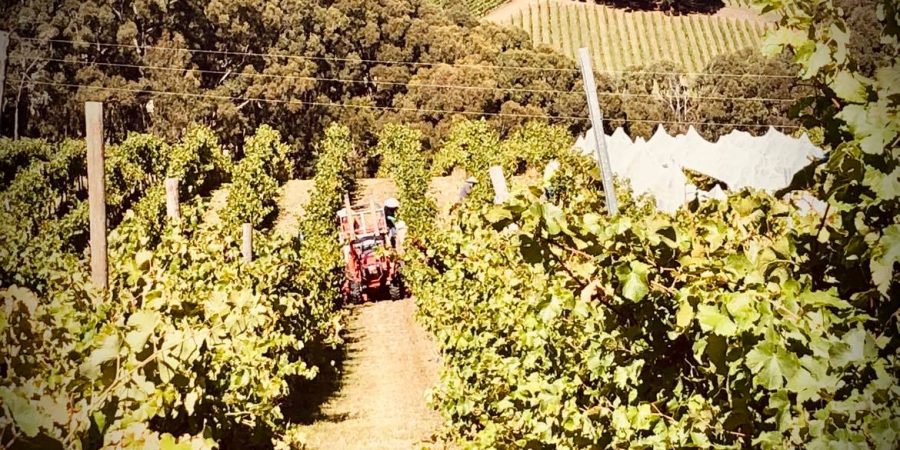The fun continues here this week with the bottling and launch of our brand-new 2023 Sauvignon Blanc.
If you haven’t got your tickets for the launch… well, I’m sorry, but I really don’t know what to say?! (other than, email me… I may just be able to sneak you in. And I am certainly open to bribes!).
Rob also bottled our 2022 Pinot Noir and a new Reserve Chardonnay (more on that to come!).
And there’s not long to go until the 2023 Rose and LDR along with the 2022 Shiraz head down the bottling line as well.
It’s so nice to see all these new wines coming through.
Way to go, Rob!
While he’s doing all the hard work, you and I should sit back with a glass of your favourite while we continue our chat about Australian wine.
Here we go…!
As I mentioned last week, there are 65 official wine regions in Australia.
Here is a map of the major ones (click on the image to see a more readable version)…
And thanks to the fact that Australia is so big and geographically diverse, each region specialises in its own particular varieties and styles of wine.
Let’s find out more…
THE VARIED CLIMATES OF AUSTRALIA’S WINE REGIONS
Australia’s latitude, maritime influences and elevation all contribute to a surprising diversity of climates, with extremely variable rainfall. Broadly speaking, there are three types of climates in the world: tropical, subtropical and temperate, with most of the world’s wine regions found in temperate climates.
This is also the case in Australia, with the areas most suited for wine production in the temperate southeast and southwest of the country, in the states of New South Wales, South Australia, Tasmania, Victoria and Western Australia.
Loving our blog? Sign up for weekly updates straight to your inbox…
[withwine type=’join-mailing-list’]
Key factors influencing climate in Australia’s premium viticultural areas
LATITUDE
Areas at higher latitudes – which are further from the equator – are cooler, making southern Australia much cooler than the north. Grapevines favour temperate climates, which mostly fall within latitudes of 30° and 50° from the equator – and most of Australia’s wine regions sit within this range.
COOLING WEATHER PATTERNS
The cold winds of the Southern Ocean moderate the weather in many of Australia’s famous wine regions. Cooling influences
in the south, southeast and southwest of the country are similar to cooler Mediterranean and maritime climates, such as those in regions of Italy and New Zealand.
ALTITUDE
Temperatures decrease by approximately 0.65°C (33ºF) for every 100 metres (328FT) increase in altitude. Australian wine regions can be found up to 1000–1200m (3281–3937ft) above sea level at their highest points.
GEOGRAPHICAL FEATURES
Three mountain ranges influence climate and weather in Australia’s wine regions:
- the Darling Scarp in Western Australia,
- the Mount Lofty Ranges in South Australia and
- the Great Dividing Range – the third longest land- based range in the world, running through Queensland, New South Wales and Victoria.
These mountain ranges influence rain, snow and wind patterns in the surrounding areas.
CONTINENTALITY
The temperature difference between winter and summer is referred to as continentality.
There are three types of grape-growing climates:
- continental,
- maritime and
- Mediterranean
These all exist within Australia’s wine regions.
Continental-climate regions
These are regions in the centre of large land masses that tend to have hotter summers and colder winters. They are better suited to early-ripening varieties, such as Riesling and Pinot Noir. Cool continental climates can be at risk of spring frosts and low temperatures during the growing period. They can have dry summers and the vineyards may need to be irrigated.
Regions with continental climates include:
- Clare Valley (SA),
- Rutherglen (Vic),
- parts of Great Southern (WA),
- Canberra District (NSW).
Maritime-climate regions
These are regions near the coast, where the climate has a narrower range of temperatures and rainfall is spread more
evenly throughout the year, which helps moderate temperatures and sunlight levels.
Growing seasons are longer, so are suited to varieties that need longer ripening times, such as Cabernet Sauvignon. Australia has many maritime-influenced regions and a small number with true maritime climates.
Regions with maritime climates include:
- Mornington Peninsula (Vic),
- Tasmania,
- Adelaide Hills (SA) and
- Coonawarra (SA).
Mediterranean-climate regions
These are similar to maritime climates, but their summers tend to be warm and dry. There is less temperature variation between the hottest and coldest months, and the warmth and sunlight lead to wines that are fuller with lower acidity and higher alcohol.
Regions with Mediterranean climates include:
- Barossa Valley (SA),
- Geographe (WA),
- McLaren Vale (SA),
- Margaret River (WA), which also has strong maritime influences.
Other than the Adelaide Hills (of course!), which is your favourite region and why?
I’d love for you to share your thoughts in the comments.

